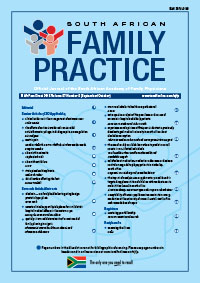The impact of Ready-to-Use Supplementary Food (RUSF) in targeted supplementation of children with moderate acute malnutrition (MAM) in South Africa
Keywords:
children, growth velocity, moderate acute malnutrition (MAM), Ready-to-Use Supplementary Food, RUSF, supplementation
Abstract
Objective: To describe catch-up growth in children with moderate acute malnutrition (MAM) on targeted supplementation using Ready-to-Use Supplementary Food (RUSF). Methods: An impact study was done to determine anthropometric changes in children aged 12–60 months who received RUSF (175 kcal/kg/day) for six weeks, managed as outpatients and followed up for 12 weeks until a final assessment. Results: Default rates were high, with 30% of children returning to the primary healthcare facility for follow-up only once or twice. Despite significant improvement in height-for-age Z-score (HAZ), weight-for-age Z-score (WAZ), weight-for-height Z-score (WHZ) and mid-upper arm circumference (MUAC), 70.5% of the sample remained in the same malnutrition classification and only 26% recovered. The growth velocity of children with a lower initial WHZ was significantly higher (r = –0.15, p < 0.05) than those with less wasting, but only 20% grew at a rate to achieve catch-up growth. The mean growth velocity decreased as the intervention period continued. Conclusion: All median anthropometric indicators improved with RUSF supplementation. However, catch-up growth or recovery occurred in only 20–25% of children included in the study. These findings create questions about the value of supplementation in the absence of blanket food distribution or other interventions to address food security. (Full text available online at www.medpharm.tandfonline.com/ojfp) S Afr Fam Pract 2015; DOI: 10.1080/20786190.2015.1078153
Published
2015-08-26
Section
Research Articles
By submitting manuscripts to SAFP, authors of original articles are assigning copyright to the South African Academy of Family Physicians. Copyright of review articles are assigned to the Publisher, Medpharm Publications (Pty) Ltd, unless otherwise specified. Authors may use their own work after publication without written permission, provided they acknowledge the original source. Individuals and academic institutions may freely copy and distribute articles published in SAFP for educational and research purposes without obtaining permission.

